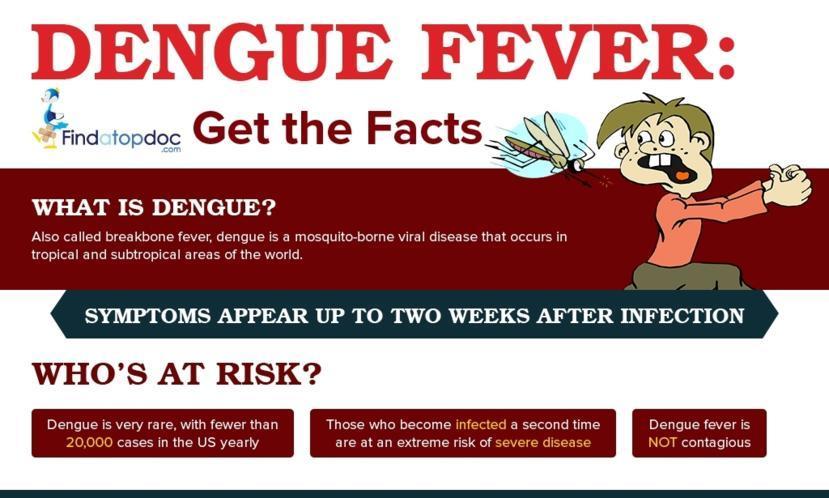How is Dengue Fever Diagnosed?
The challenges of diagnosing Dengue infection and differentiating it form other viral fevers

Dengue fever, transmitted by the virus-carrying Aedes aegypti mosquito, is difficult to analyze and identify in its initial stages. This is mainly because the symptoms mimic those of other viral fevers, most notably leptospirosis, (picked up from infected pets and rodents) malaria, and typhoid. Diagnosis is possible mainly through a physical checkup and laboratory testing if the disease is widespread in the community.
The Dengue infection produces high fever (104°Fahrenheit or 40°Celsius) associated with one or more of seven core symptoms
- Pulsating pain in the abdomen that worsens with the passage of time
- Nauseous feeling accompanied by actual vomiting or gagging
- The appearance of rashes and bruising of the outer skin
- Feelings of intense lethargy and listlessness, which in a severe form can cause a comatose in the affected
- Blood loss through the lining of the mouth and nasal passages
- Distended liver detectable through abdominal palpation's
- Blood tests reveal a higher percentage of red blood cells compared to white blood cells, and platelets show a steady decline
The prevalence of Dengue fever in the community usually determines the level of seriousness with which each symptom is studied after the onset of fever.
The danger to the patient increases once the Dengue infection survives its incubation period
The Dengue virus needs roughly seven to fourteen days to incubate in a host body before symptoms worsen. Danger increases when the fever continues unabated for more than two weeks. The infection is more likely to progress to a higher level of seriousness indicated by Dengue Hemorrhagic Fever, the symptoms of which are:
- Vascular damage, capillaries bursting, blood and fluid leaking into tissues.
- Accumulation of fluid in the lungs and abdomen leading to septic conditions in tissues.
- Severe dehydration and fall in blood pressure because of rapid loss of fluid.
Diagnosis of Dengue infection through the tourniquet test
The World Health Organization has listed this test as one of the tools for diagnosing Dengue fever, and it is particularly useful when blood testing facilities are not readily accessible. A tourniquet or elastic band is tightened around the arm, and above the elbow between blood pressure readings. The patient is then examined for petechial eruptions. These are small blood capillaries bursting near the skin's surface. Petechial bleeding indicates that blood vessels are fragile enough to burst when the blood pressure rises. A positive tourniquet reading is considered as one of the most reliable and inexpensive tests for the Dengue infection.
The significance of the traveling history of the patient
Typically, Dengue fever spreads from endemic regions to the US through infected travelers mostly hailing from Mexico, South America, and the Caribbean islands. Problematic areas on the radar for health authorities are Puerto Rico, the U.S., Virgin Islands, American Samoa in the South Pacific, and Guam in the Western Pacific. Probing the travel history of the patient is necessary to evaluate the likelihood of dengue contraction.
Blood testing confirms Dengue infection
If you are visiting or living in a tropical or subtropical country where your fever has persisted for two weeks, you are at high risk of Dengue infection. The risk is greater if the fever is accompanied by one or more of the seven symptoms associated with Dengue fever. Blood testing is the only way to eliminate doubts of infection.
- Detecting Dengue virus on the molecular level – The test is sensitive enough to identify the virus once it is physically isolated from tissue samples obtained within five days of infection.
- Testing for antibodies – This is the second most invaluable test that targets the antibodies, (microbe-removing proteins) which are released by the immune system following the Dengue infection. Such testing is more result oriented if it is performed a week after the infection.
- The Total Blood Count – This offers crucial data that enables the physician to assess the health of the various active ingredients that make up the blood. They include red blood cells, white blood cells, platelets, and the ratio of one component to the overall blood volume.
- Kidney and Liver function tests – They are helpful in assessing how far the two vital organs are damaged or stressed. Renal and liver failure are inevitable once symptoms of Dengue fever are uncontrollable.















